Introduction
The warthog (Phacochoerus aethiopicus) is possibly one of Uganda’s most famous animals thanks to the appearance of Pumbaa in Disney’s The Lion King and his musical hit “Hakuna Matata”. Warthogs are wild pigs with large heads, bristly manes, long skinny legs and protruding tusks, giving them a comical appearance well-suited to animation. Warthogs get their name from three wart-like bumps on their head which are actually fatty lumps that protect them during fights.
Warthogs are common in all of Uganda’s savannah national parks, including Lake Mburo, Murchison Falls, Queen Elizabeth and Kidepo Valley.
Fascinating facts
An unlikely alliance

The warthogs of Queen Elizabeth National Park have teamed up with banded mongoose to rid themselves of annoying ticks. When in the company of a mongoose, the warthog will lie down and allow the mongoose to remove the little parasites on the warthog’s skin.1https://www.sciencedaily.com/releases/2016/03/160307150359.htm The warthog walks away feeling beautiful and the mongoose gets a tasty snack. Win-win! Sometimes you might also see a bird perched on the back of a warthog, feeding on the little insects and parasites trying to invade the warthog.
Hench herbivore
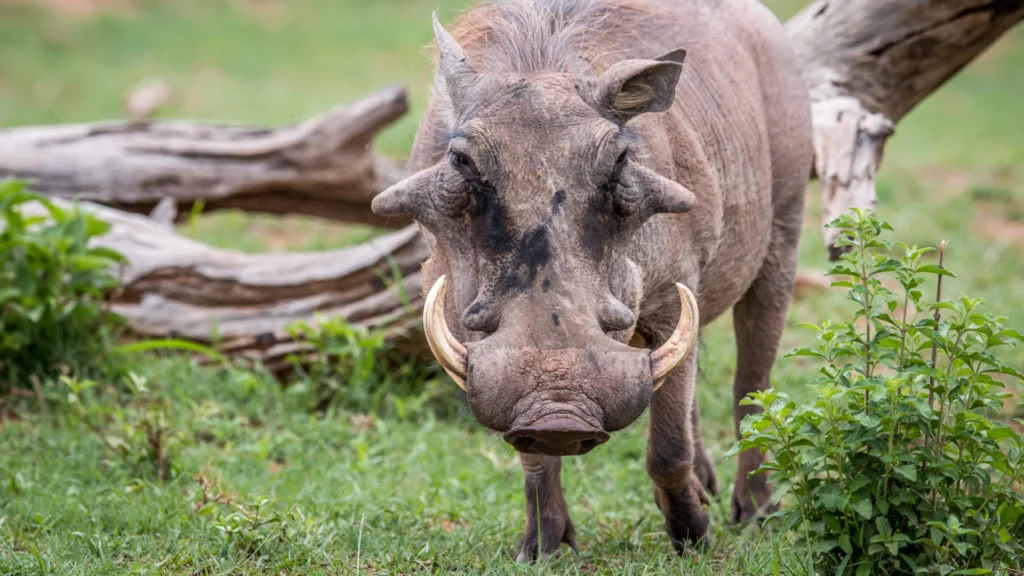
Warthogs might look a bit scary but they spend most of their time grazing on grass. They’ll also eat small insects, fruit and berries, and even scavenge dead animals if food is scarce and the opportunity arises. But their favourite food is grass roots, bulbs, stems and seeds. Their long legs allow them to drop onto their front knees and pull the grass from the ground.2https://ielc.libguides.com/sdzg/factsheets/warthog_common/diet
Survival experts

Warthogs can go months without a sip of water. This helps them survive the dry season. But when the rains come, warthogs will seek out water and plunge in, to cool down. They also like to take mud baths, which also give relief from the heat and all the itchy insects.3https://www.nationalgeographic.com/animals/mammals/facts/warthog
Fight or flight
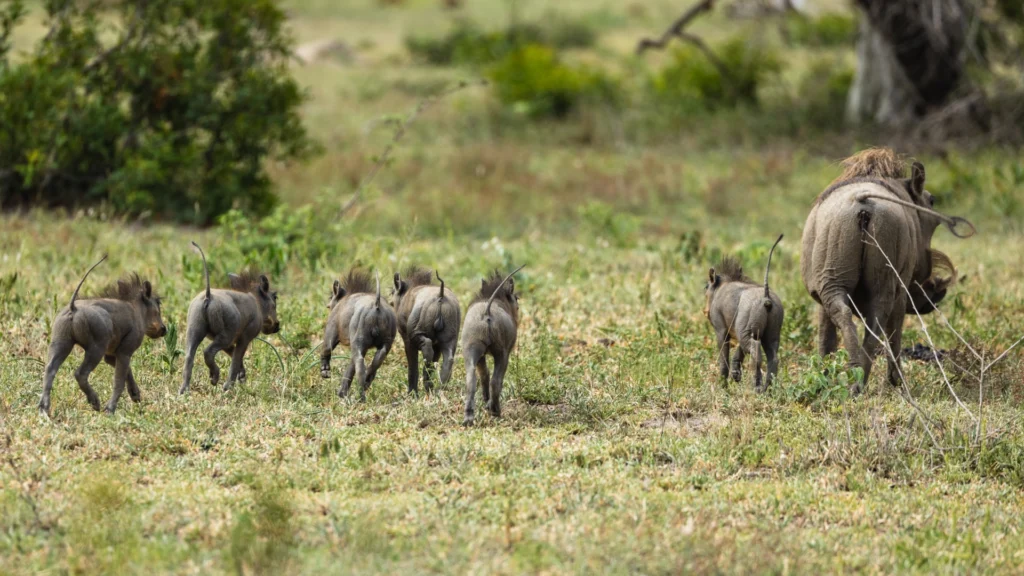
Despite their fierce appearance, most warthogs would rather run from danger than confront it. They can reach a top speed of 30 miles per hour to escape predators.4https://www.livescience.com/58337-warthog-facts.html Because they can’t dig themselves, they’ll often find a hole dug by another animal to hide in.3https://www.nationalgeographic.com/animals/mammals/facts/warthog If they are forced to defend themselves, they’ll charge out of their hiding place, tusks first and have been known to kill lions in self-defence.5https://www.ugandaparks.com/animals/mammals/warthog/
A mother like no other
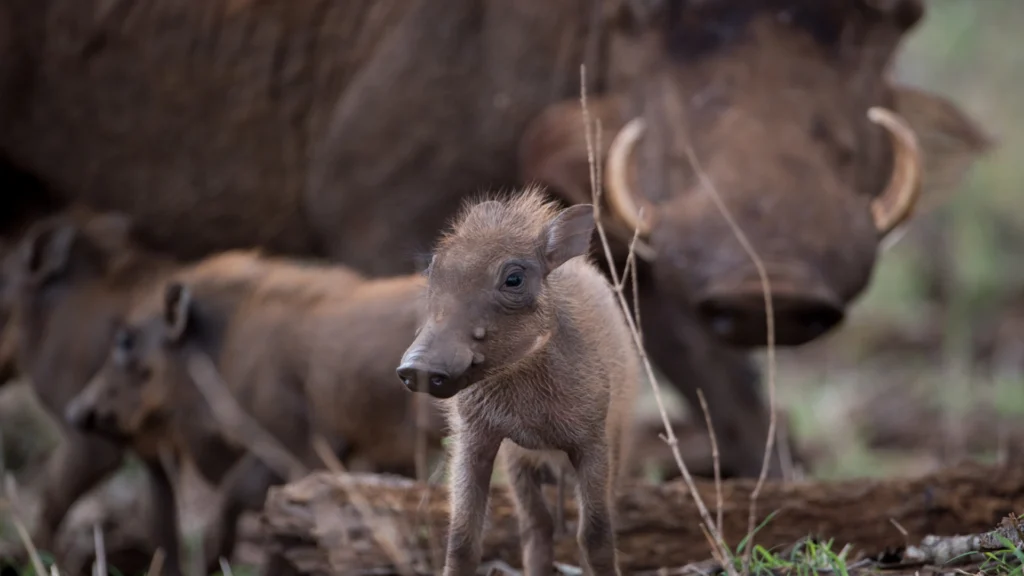
Female warthogs become ready to start a family at two years old, although males are usually four years old. Warthogs are pregnant for the longest of all pig species – five months – and have two to eight piglets (most typically up to four). The mother warthog suckles her piglets for four months and the piglets are grown up when they reach 20 months old.4https://www.livescience.com/58337-warthog-facts.html At this point the females stay in the mother’s sounder (group), but the males leave to lead more solitary lives. The male plays no part in raising the young warthogs so their survival is all down to their mother.
Friendly females
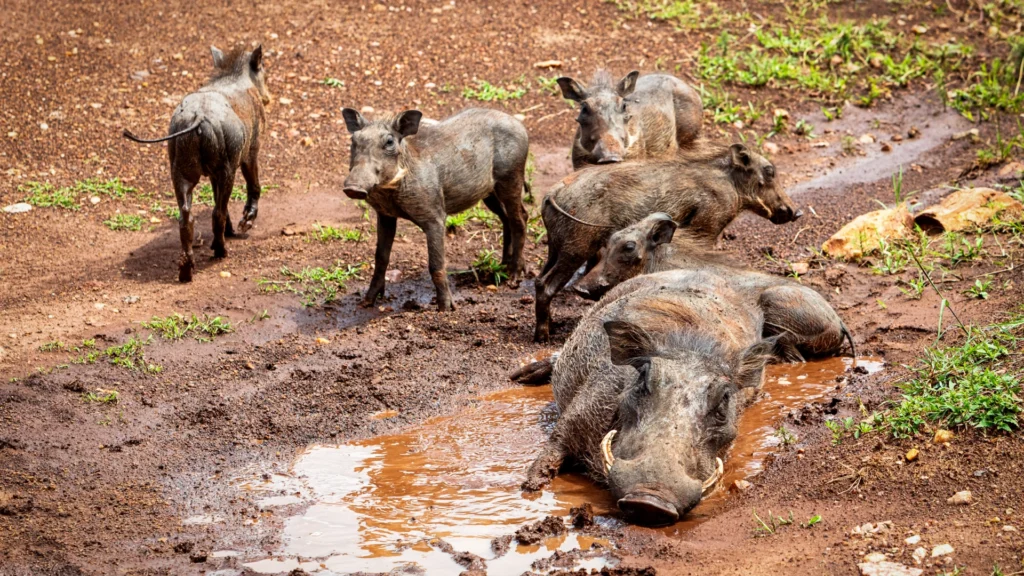
Female warthogs, called sows, are social beings and live in groups called sounders, which may have up to 40 members. Females groom each other and cuddle together at night to keep warm.
Magnetic pigs
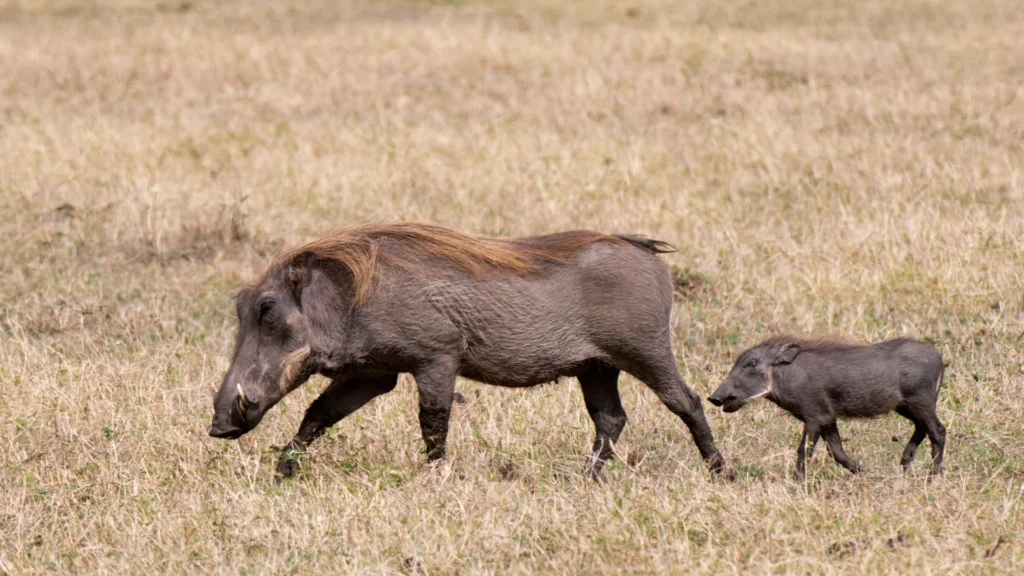
Warthogs have an innate magnetic sense and can detect north and south. This helps them navigate their way as they forage for food and move to new areas.6https://www.sci.news/biology/warthogs-wild-boars-internal-magnetic-compass-03971.html
Food thieves
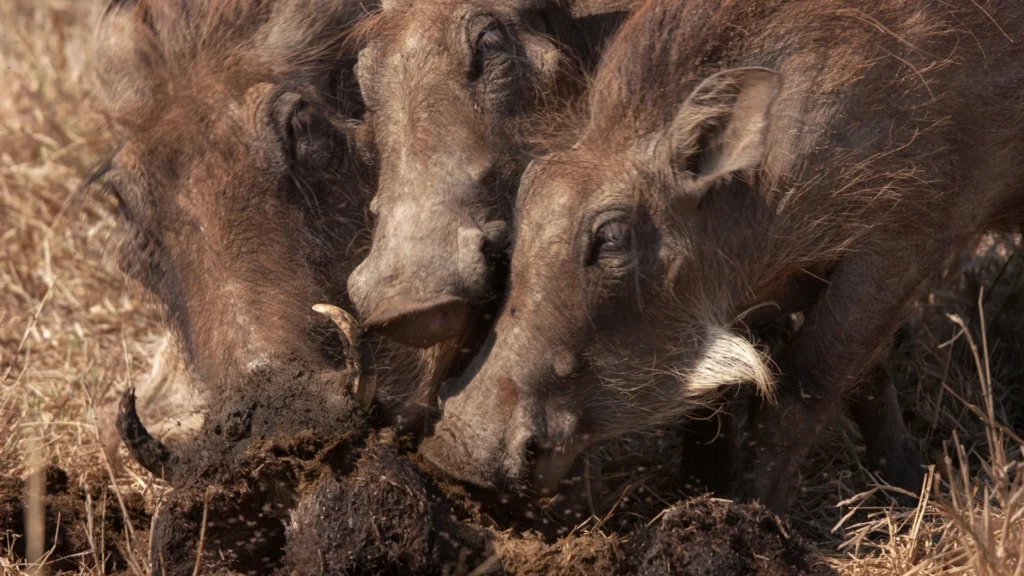
The term “greedy pig” might seem a bit unfair to pigs, but it is true in the case of the warthog. Visitors to Uganda’s national parks are advised not to leave food in their tents because the moment the warthogs catch a whiff of it on the breeze, they’ll tear the tent open and gobble anything and everything they find.5https://www.ugandaparks.com/animals/mammals/warthog/
Threats to warthogs
Human-wildlife conflict
Human-wildlife conflict is the biggest threat to warthogs in Uganda. As the natural grasslands of the savannah are converted into farmland to feed the growing human population, warthogs have gained a bad reputation amongst local people for raiding crops. Warthogs are often killed for helping themselves to wheat, rice, beans and peanuts.7https://www.awf.org/wildlife-conservation/warthog But let’s be clear: humans are the one’s trespassing on the warthog’s natural environment, and if we do that, we have to learn to live alongside them.
Warthogs are also persecuted by farmers for carrying the African Swine Fever virus (ASFv), which is harmless to warthogs but fatal to domestic pigs.8https://www.sciencedirect.com/topics/immunology-and-microbiology/warthog ASFv is spread by ticks which feed on an infected warthog and then pass the virus on to another warthog, or pig, when the tick finds a new host. Rather than resorting to the killing of warthogs, other ways to protect domestic pigs need to be used. For example, faecal transplants from warthogs to domestic pigs may offer pigs protection against the virus.9https://www.pigprogress.net/health-nutrition/warthog-microbiota-for-partial-protection-against-asfv/ Of course, the best way to protect pigs from disease and suffering would be to stop farming them altogether!
Hunting
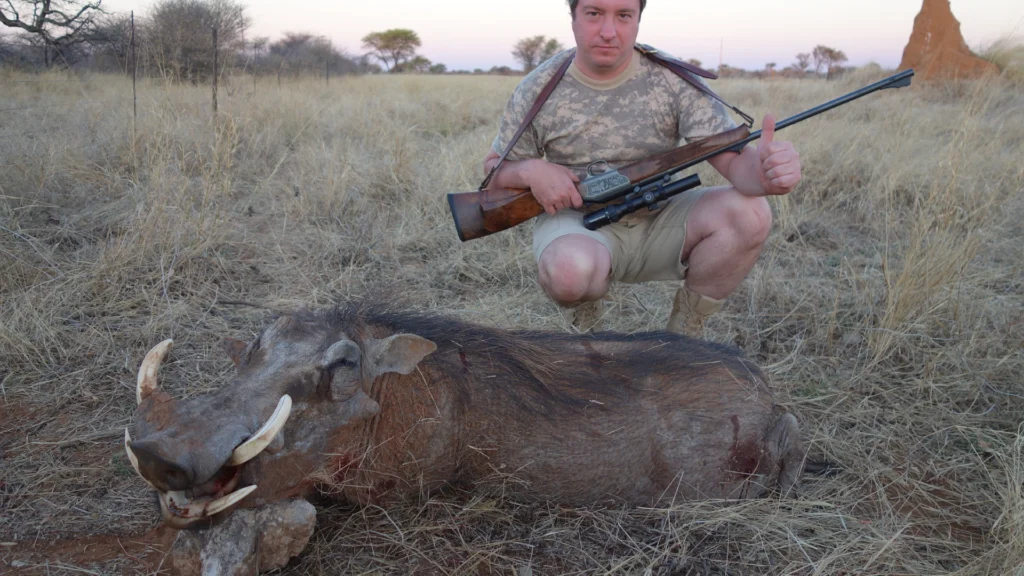
As well as being killed by farmers, warthogs are also hunted in the name of ‘sport’ in some of Uganda’s wildlife reserves.10https://www.queenelizabethnationalpark.com/hunting-in-uganda.html Trophy hunting of warthogs most commonly takes place in the Kafu River Basin, Awsa Lolim Wildlife Reserve and Kabwoya Wildlife Reserve. In fact, the official website of Queen Elizabeth National Park actually promotes trophy hunting of warthogs, as well as other species!
Warthogs are usually shot with a rifle or bow and arrow from a bunker or hide overlooking a watering hole. The warthog’s peacefully drink at the watering hole is violently interrupted when the bullet or arrow rips into their flesh. The wound rarely kills the animal straight away and they often run off into the wilderness before collapsing from their injuries. If the warthog is not found quickly, they will slowly bleed to death, or if the hunter’s shot isn’t fatal but only wounds the animal, the warthog might escape only to die of an infection later on. Trophy hunting is nothing more than sadistic humans flexing their egos and should be entirely outlawed. The argument that trophy hunting is needed to fund conservation is totally flawed. There are ways to conserve wildlife that don’t involve killing!
References
References
- 1
- 2
- 3
- 4
- 5
- 6
- 7
- 8
- 9
- 10

